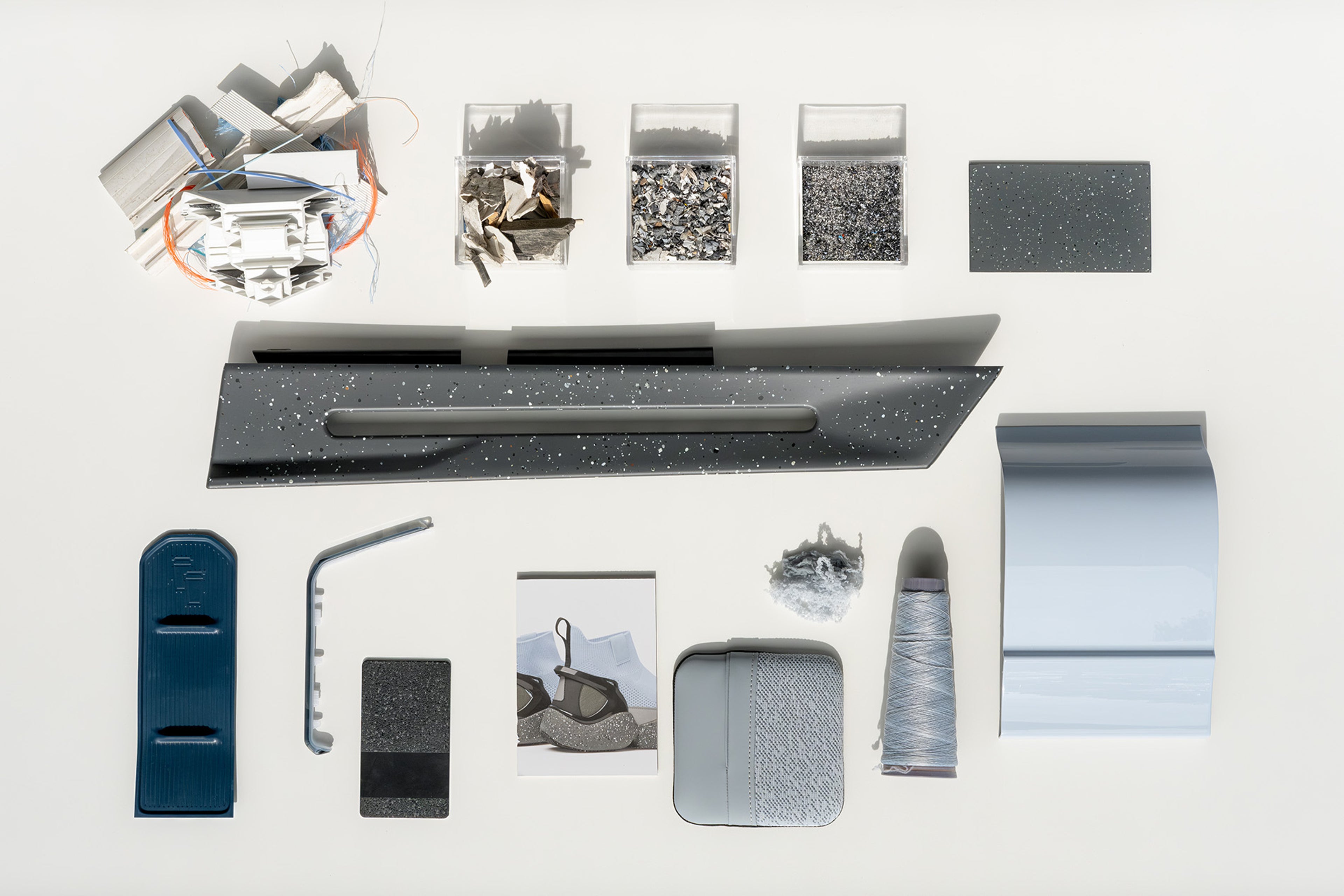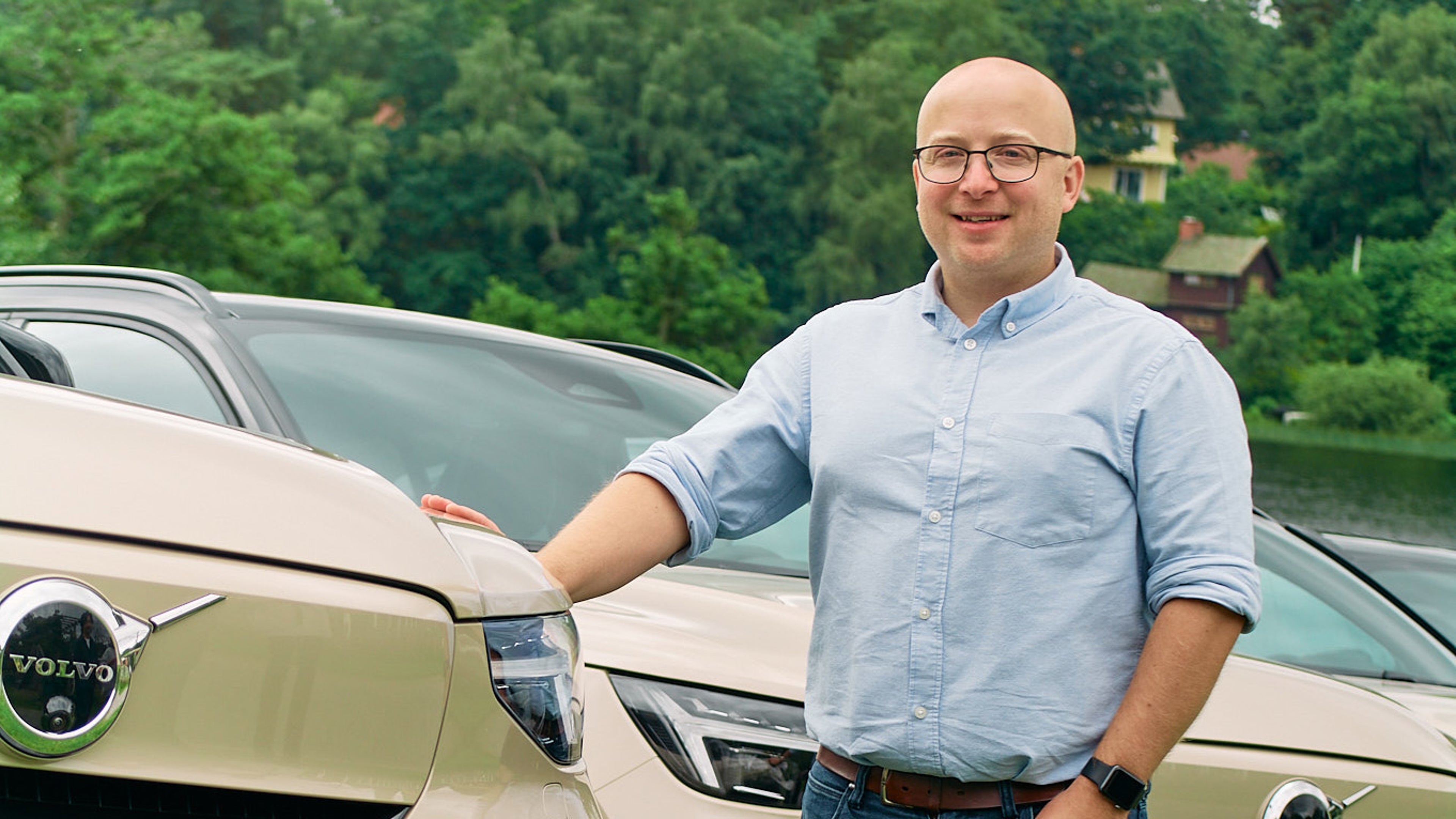Becoming a circular business is a material thing
Discover how recycled materials in Volvo cars are essential to a sustainable future.

In the new Volvo EX30, 17 per cent of the material is from recycled sources.
The world is facing a triple planetary crisis: climate change, pollution and biodiversity loss. Most businesses that produce material goods, like us, are a part of the problem, and therefore also need to be a part of the solution. A solution that comes down to material things. We aim towards becoming a circular business by 2040 – but what does it mean to be a circular business, and why is it important? Last year, we produced more than 760,000 Volvo cars. In these cars, we used more than an estimated 1.5 million tons of materials. This includes everything from metals to minerals, as well as numerous plastic materials, elastomers, natural materials and fluids. That is quite a bit of materials to source from various natural resources. Naturally, we will need to get creative with how we work with mother nature going forward. By 2025, we aim to have 25 per cent recycled or bio-based materials in new car models. While that’s a good start, it still isn’t fully circular. The bigger fish to fry is to source material that is durable and tolerant enough to reuse and recycle from one car to another. This is no easy feat, but we’re up for the challenge.
When designing a new car, our teams in design and engineering work hard at selecting the right material for the right application.
To get down to the nitty gritty of circularity, we sat down with Owain Griffiths from our circular economy and biodiversity team, who will fill us in on how the recycled material in our cars play an important role in our circular business ambition.

Owain Griffiths from our circular economy and biodiversity team at Volvo Cars.
Hi Owain! First of all, what is a circular business? “In a nutshell, being a circular business is about decoupling economic growth from resource consumption. It’s about minimising our negative sustainability impacts while at the same time using fewer primary resources. To get there, we need to keep challenging the ways we do business and come up with new and creative solutions.” Why is it important to become a circular business? “We produce hundreds of thousands of cars every year. In this process, it’s the mining and processing of natural resources that have the most significant impact on the environment. 80 per cent of our impact on biodiversity and ecosystems occurs across our value chain. As natural resources are becoming increasingly scarce and expensive, we need to carefully consider how we handle natural resources throughout the life cycle of our cars.” Tell us more about the ambition to become a circular business by 2040! “We have developed a comprehensive set of measures and ambitions (our strategy) to become a circular business in 2040. Already by 2025 we aim to have 25 per cent recycled or bio-based materials in new car models, as well as generate one billion SEK from circular economy initiatives (from a 2018 baseline). For example, in the new EX30, 17 per cent of the material is from recycled sources.” Why is a circular economy important? “For us at Volvo Cars, sustainability is just as important as safety. It’s central to our business and, quite simply, key to our future success. We aim to be pioneers in protecting people and the planet by working towards net zero greenhouse gas emissions, striving for a nature positive contribution on biodiversity, embracing the circular economy, and conducting business responsibly. We believe that doing this, in partnership with others, ensures we help address global sustainable development challenges and support our profitable growth.” How are the materials in our cars examined from a sustainability perspective? “The materials we use are examined by its durability, carbon footprint and biodiversity impact, as well as responsible business impact. When designing a new car, our teams in design and engineering work hard at selecting the right material for the right application. To reduce the impact from the materials we use, we work towards recycling our waste, preferably in high value and closed loops. This means we preserve the characteristics of materials that make them most useful. One example of this is our closed loop recycling of steel and aluminium scrap generated by our stamping facilities in both Europe and China. And, we are one of the first car companies to develop a closed loop for batteries in China. We also aim to minimise resources used to build our cars, like energy and water.” On top of that, what else do we need to do to succeed? “This process will be a gradual transformation where we focus on reducing resource usage throughout our entire value chain. This involves designing products with less primary resources while considering the entire life cycle of cars up to their recyclability. And it's not just about us; we must also work with suppliers and retailers to transform their operations and products into circular business practices. We also need policymakers to expand renewable energy infrastructure and support organisations applying the circular economy, while rethinking waste as a resource rather than something to be disposed of. Additionally, introducing harmonised standards for sustainability reporting and robust materials certifications with traceability solutions are essential for enhancing transparency and performance.” Finally, how do we keep track of where we’re at? “Last year, our circular business strategy was updated with the inclusion of measures and KPIs that track the breadth of the impact we have. And we recently updated our approach to how we track circular revenue and will work towards alignment with the EU standards. Along the way, we aim to develop even more measures to track value of products, parts and materials, in order to improve value retention and support corporate resilience.” Keen to learn more about our sustainability ambitions? Check out our Annual and Sustainability Report.